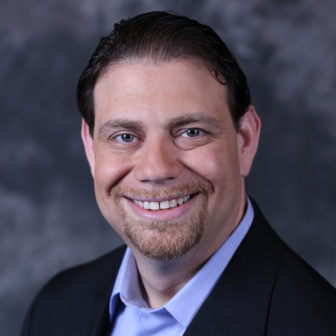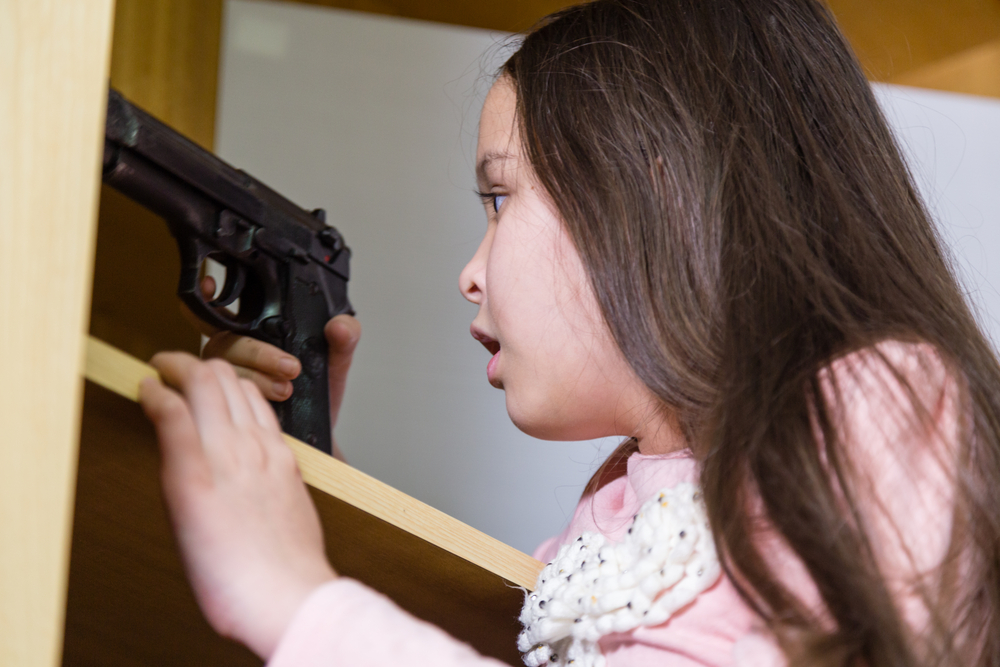ATLANTA — Guns are everywhere you think they’re not. Guns have been found on the floor of a movie theater and in the diaper aisle of a big box retailer. They aren’t just slid under a mattress at home or tossed up to the top shelf of a closet; they’re lying in a pile of leaves, or behind a toilet in an airport.
Guns end up in unlikely places. Like a ditch. Near a school. A man being chased by police in a neighborhood near an Atlanta charter school tossed a gun during the foot chase. It was never found.

Matt Podowitz
Matt Podowitz, who has developed a presentation being shown around the U.S. on gun safety for children, has his search engine focused on instances of guns and kids: gun+child+accident. The tragedies routinely roll across his screen because kids are finding the gun, wherever it is.
He lived in that Atlanta neighborhood where the man tossed his gun before being apprehended in 2008. There was a frantic search for the gun. A member of the Parent Teacher Association called him and said, “Matt, parents don’t know what to say to their kids. Can you help?”
It spurred Podowitz to create a presentation for parents: “Why and How to Talk With Your Children About Gun Safety (Even If You Don’t Own Guns).”
For more information on Youth Gun Violence Prevention, go to JJIE Resource Hub | Youth Gun Violence Prevention
It is not a slick title, but it shouldn’t have to be. The message is what’s important because civilians in the U.S. own 393 million firearms, according to the Small Arms Survey, a project of the Graduate Institute of International and Development Studies in Geneva. Kids have more opportunity to find guns, especially in the South where there are more guns than any other region of the country.
Many parents do not have gun safety as firmly planted on their radar as “stranger danger” or “medicine cabinet calamity,” Podowitz said.
“It doesn't matter whether you own guns, or like them, or not, you can't control when your children might encounter a gun outside of your supervision, or outside of responsible adult supervision,” said Podowitz, who lives in Dunwoody, an Atlanta suburb. “There are a lot of adults who through negligence, or in some cases malice, are not sufficiently attentive to where their gun is. Someone has left a gun in a place where it has been accessible to a child. A child does not know how to behave responsibly.”
Different lessons for different ages
Podowitz does not make money from the presentation, which lasts 35 to 40 minutes. He has given it more than 100 times to community groups and distributes it around the U.S. when people contact him. A mayor in a small town in Washington state asked him to fly out and give the presentation. He couldn’t do that, but he coached the chief of police, who made the talk.
His presentation is especially relevant in the South, where there are more unintentional gun incidents with children than any other region of the country.
The program differentiates between age groups, and that is key, he said. He gears one lesson to children in preschool to third grade, another to tweeners (fourth to seventh grade) and another to teenagers. Each cohort is going to digest the message differently, he said.
“As children get older the messaging has to change,” Podowitz said. “The younger child is going to get ‘Run from a Gun.’ The 9-year-old is curious. He is not going to walk away from it.”
[Related: Gun Violence in South Outpaces Other Regions For Many Reasons]
For older children, who have seen gun violence nonstop on video games, TV and in movies, images are imbedded. They are not easily changed.
“We have given wrong messages about guns to children,” Podowitz said. “You see it on the television. The good guy is shot and carries on being the good guy. The bad guy is shot and falls over dead.”
The point is the gun does not differentiate between good and bad. The good guy can die too. Kids are oblivious to that reality. When they handle the gun they see themselves as the good guy: Nothing bad can happen.
Podowitz, whose full-time job is as a management consultant, has the perfect personality for a presenter: He has a commanding voice and a certain presence, as well as a tone of reverence for the gun. The father of a 12-year-old, he also has passion for his topic.
“The presentation is practical. It is not hypothetical, it is not theoretical, it is not ambiguous guidance,” he said. “There are specific talking points for specific age groups, addressing specific issues they may encounter.”
Strong reactions
The fact that Podowitz has given the presentation just over a hundred times, and not in the thousands, speaks partly to the animosity in the gun debate. After one of his presentations, a woman walked up to Podowitz and slapped him in the face. She had lost a niece to a gun accident. The woman then broke down in tears. Podowitz has been heckled at his presentation by pro-gun people for mentioning the Brady Campaign, which is viewed an anti-gun.
“When [gun control] people find out I am a competitive shooter they say, ‘Oh, you’re on that side,’” Podowitz said. “This is a gun-agnostic presentation, but what I call ‘The Great Gun Divide’ keeps some people from listening.”
Podowitz gears his presentation smack down the middle, but he is dismayed some of his audiences are not larger because of the politics.
“I hear it all the time, people saying ‘I will not associate with people who have guns,’” he said. “The ‘G word’ is not allowed in their house, they say. So the guidance children receive comes from one side or the other in the Great Gun Divide.”
Podowitz has a message for the people who work feverishly to limit the use of guns in the U.S. These people are less likely than so-called pro-gun advocates to teach their children gun safety. It’s a fact that bothers him.
“Every parent should be having the conversation,” he said.
Podowitz said guns are inevitable, even in countries with strict gun laws like Britain and Australia. Google it, he insists. Their kids need gun safety classes as much as our kids.
He is blunt about the failure of those parents who have not sought expert advice about the dangers of guns, which are everywhere.
“You can’t be with your child 24 hours a day,” he said. “If you haven’t had the equivalent of the stranger danger conversation with your child about guns then you have failed to help them avoid what ultimately is avoidable risk.”
